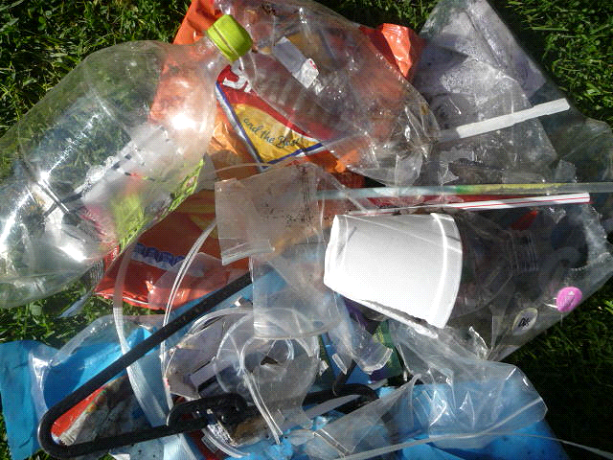REDcycle pause spurs broader industry discussion – Australia
Posted on November 19, 2022 by DrRossH in Plastic Recycling“Soft plastic recycling comprises less than 0.02 per cent of total domestic recycling, however the REDcycle scheme has played a vitally important role in creating pathways and providing a solution for this very visible and hard-to-recycle material,”
“There is a severe lack of information and transparency to consumers about what happens with the soft plastic recycling that is taking place in Australia, what happens to products after collection, and the complexities of soft plastics that make them difficult to reuse at end of life,”
“Environment ministers need to take forceful action. Putting a label on packaging that says ‘recyclable’ does not mean it is recycled in practice or at scale.”
Before we all raise our hands in the air and say the world is going to end with the collapse of Redcycle, we should consider what is actually going on in the world of soft plastic recycling in Australia. Redcycle has been doing us all a big favour these last few years. It lets people dispose of the soft plastic guilt free. We bought it, then disposed of it thinking it was being recycled into another product, so all was good, we were doing the right thing. However, Redcycle were only receiving and recycling a small percent of total soft plastics and the greater bulk were still going to landfill
Alternate Materials for Soft Plastics
The most obvious and lowest cost is to REDUCE the use of it.
Biodegradable Plastics, are they an option?
If Reduce on a significant scale is not a viable option and setting up efficient soft plastic recycling is going to take too long or not be economic, then another option is to use a material that is able to harmlessly biodegrade away in a simple manner.
The government 2025 targets say use compostable materials. By this they mean plastics that can biodegrade away. The first thing to understand however, is not just say compostable. It has to be stipulated as Commercial compostable or Home Compostable. Two different products covered by two different standards. AS4736 for commercial and AS5810 for Home. If people are saying their product is compostable, they are generally try to not mention it as being commercial compostable. Commercial compostable requires specific conditions for it to biodegrade. Maintain about 60 deg C, lots of oxygen (aeration) and moisture. It is an aerobic process. If the disposal area can meet those conditions, the material will biodegrade fully away within 12 months. If they cannot meet them, the biodegradation does not occur as the necessary microbes cannot survive and the product persists.
Commercial compost is NOT a recyclable material. So these are not of much help to the general consumer trying to be responsible. The embodied energy of a commercial compostable plastic cannot be captured for energy production as it biodegrades directly to CO2 in its aerobic environment. Commercial compostable will not be part of the circular economy
Home compostable (HC) is a modified commercial compostable material. It is a mix of approximately 40% of the above compostable starch material and 60% of a oil based material called PBAT. This allows a HC material to biodegrade away quite fast in a few months to a year type time frame. HC material will biodegrade aerobically or anaerobically, hence it can go to a landfill. This is advantageous as this is where people are used to disposing of their waste and therefore no special infrastructure and mass re-education is required.
HC material is not recyclable. It will not form part of the circular economy.
If a label says a product is compostable it is referring to one of the two standards above. It needs to stipulate if it is commercial compost or home compost and where it needs to be disposed of to avoid confusing the reader and causing disposal in the wrong place
An emergent technology – Landfill-biodegradability
Almost anything organic is technically biodegradable. A plastic bag may take 200 years, but that means it is biodegrading very slowly for 200 years. In the USA, their FTC about 10 years ago released a document with the requirements of that if a claim that something is biodegradable then the claim has to also say where to dispose of it for to be able to biodegradable. Plus it had to provide an indication of how long it will take to biodegrade as some producers were making claims that were unsubstantiated. Australia doesn’t have this requirement yet, but it is finally coming. There is no standard for Biodegradability Don’t let anyone say there is. To provide evidence of biodegradation then, standardised tests are performed to measure the amount of biodegradation that occurs over the time period the test is run. These are generally ASTM tests. The percent of carbon evolved from the plastic sample in the biodegradation chamber is accurately measured. With these tests, they report results such as over 100 days, 5% biodegradation was measured. Or over 1050 days 76% biodegradation was measured. Linear extrapolation cannot be made to say if 5% was measured over 100 days then over 2000 days (5.5 years) 100% would be expected. The biodegradation process is more complicated than that. All that can be stated is the material exhibited biodegradation and over the measured 100 days, 5% was measured. These tests do however demonstrate a valid method to show whether a plastic can be made to biodegrade or not.
Landfill-biodegradable supplements for plastic were commercially developed around 2010 in the USA. An inert organic food supplement is added at a small ratio into the conventional plastic at the time a product is made. The plastic looks and behaves just like a normal plastic, and the only difference is when it is discarded to a landfill, the microbes see the food and are drawn to its surface. The biodegradation can be under aerobic or anaerobic conditions. The biodegradation process as explained as1
The term “biodegradable plastics” normally refers to an attack by microorganisms on nonwater-soluble polymer-based materials (plastics). This implies that the biodegradation of plastics is usually a heterogeneous process. Because of a lack of water-solubility and the size of the polymer molecules, microorganisms are unable to transport the polymeric material directly into the cells where most biochemical processes take place; rather, they must first excrete extracellular enzymes which depolymerize the polymers outside the cells. As a consequence, if the molar mass of the polymers can be sufficiently reduced to generate water-soluble intermediates, these can be transported into the microorganisms and fed into the appropriate metabolic pathway(s). As a result, the end-products of these metabolic processes include water, carbon dioxide and methane (in the case of anaerobic
degradation), together with a new biomass. The extracellular enzymes are too large to penetrate deeply into the polymer material, and so act only on the polymer surface; consequently, the biodegradation of plastics is usually a surface erosion process.
This is not a fast process like the above two compostable processes. But of an accelerated rate, depending on landfill conditions of temperature, moisture level, and other parameters. Landfill-biodegradable supplements result in improved biodegradation times of decades instead of centuries. If the gas given off is methane this can be captured in a modern landfill and used to generate energy. This can’t happen with aerobic biodegradation. So, when people talk about the circular economy it can be about circulating materials or circulating energy Another big advantage of this landfill-biodegradable is the product is still fully mainstream recyclable with other plastics. Hence given all this, every plastic should be made landfill-biodegradable at least. An increasing number of companies in Australia are offering some landfill-biodegradable products now. Some products will get recycled (material recycling) and the rest will get disposed to a landfill to biodegrade away, (energy recycling for those landfills that collect their biogas). It is like a back stop policy to reduce our plastic waste legacy.
Or course, with compostable or landfill-biodegradable neither form microplastics as they are being biodegraded away.

 How many people today grab a takeaway coffee cup from the local cafe to drink on the go? We don’t know, but the number must be enormous.. Most every one of the above have a plastic top that will last 100s of years. Some cafes still use plastic cups that last a similar time. Is 10 minutes of coffee worth 100s of years of trash?
These items can be seen littering our gutters and on our streets all over the place. If they were all cardboard, they would still be littered, but they would, at least, be gone in a short time.
They do not need to be made of plastic.
How many people today grab a takeaway coffee cup from the local cafe to drink on the go? We don’t know, but the number must be enormous.. Most every one of the above have a plastic top that will last 100s of years. Some cafes still use plastic cups that last a similar time. Is 10 minutes of coffee worth 100s of years of trash?
These items can be seen littering our gutters and on our streets all over the place. If they were all cardboard, they would still be littered, but they would, at least, be gone in a short time.
They do not need to be made of plastic.
 On the way home from the gym last week, a distance of about 1 km (1/2 mile), I counted the items of plastic litter on the curb as I walked. In that short distance I counted 63 pieces of plastic litter. Plastic drink bottles, bottle tops, candy wrappers, plastic film, polystyrene fragments etc. That seemed to be a lot to me. I guess it is a generational thing. Our parents would have been horrified to see that amount, whereas it seems to go unnoticed by our youth of today. In another 20 years how many pieces will there be on this stretch, -- 200? What will today’s youth think of that new amount then when they are older? Will their children be so readily accepting of a higher amount of litter?
On the way home from the gym last week, a distance of about 1 km (1/2 mile), I counted the items of plastic litter on the curb as I walked. In that short distance I counted 63 pieces of plastic litter. Plastic drink bottles, bottle tops, candy wrappers, plastic film, polystyrene fragments etc. That seemed to be a lot to me. I guess it is a generational thing. Our parents would have been horrified to see that amount, whereas it seems to go unnoticed by our youth of today. In another 20 years how many pieces will there be on this stretch, -- 200? What will today’s youth think of that new amount then when they are older? Will their children be so readily accepting of a higher amount of litter?
Discussion · No Comments
There are no responses to "REDcycle pause spurs broader industry discussion – Australia". Comments are closed for this post.Oops! Sorry, comments are closed at this time. Please try again later.